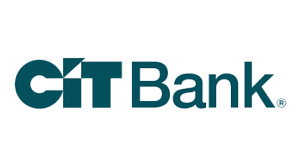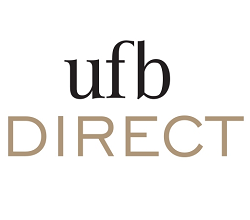More than 9 out of 10 American adults have either a checking or a savings account. The benefits are obvious: easy money transfer and storage. Checking and savings accounts are the peanut butter and jelly of personal finance: useful separately, but best when paired.
But when should you open a checking account vs. a savings account? We'll break it down.
What is a savings account?
Savings accounts help you store money you may need in the next one to five years or so. People open them because they earn you higher APYs on deposits than checking accounts. But savings accounts may limit withdrawals.
Pros of savings accounts
Higher interest rates: Savings accounts typically offer much higher interest rates than checking accounts. Online banks tend to offer the highest rates. The best high-yield savings accounts offer rates around 10 times higher than the national average.
Low minimums: Savings accounts typically require low minimum deposits, if any. Think $100 or less to open an account. (It's still "your money," but you must keep it in the account.)
FDIC insurance: Like checking accounts, savings accounts are also usually FDIC insured up to $250,000 per person per bank.
Cons of savings accounts
Withdrawal and transfer limits: Savings accounts limit you to six convenient withdrawals per month, according to Regulation D.
Feature limits: Savings accounts offer fewer features than checking accounts. It's tougher to find savings accounts that offer debit cards and check-writing capabilities.
Compare savings rates
Make sure you're getting the best account for you by comparing savings rates and promotions. Here are some of our favorite high-yield savings accounts to consider.
What is a checking account?
Checking accounts help you spend and store money you might need tomorrow. They usually give you multiple deposit and withdrawal options so you can add and withdraw funds easily. Money kept in your checking account earns you little interest, if any.
Pros of checking accounts
Convenience: Banks and credit unions give you several ways to move your money in and out of your checking account, including:
Few limitations: Checking accounts generally let you withdraw funds as often as you want. Savings accounts are typically more limited (see below).
FDIC insurance: All the checking accounts at top banks are insured by the Federal Deposit Insurance Corporation (FDIC) up to $250,000 per person per bank. That means if your bank goes under, the FDIC will reimburse your lost funds up to a maximum of $250,000.
Cons of checking accounts
Little to no interest: Checking accounts typically don't pay you money for hoarding cash in them. If they do pay you, it's probably not much compared to top-tier savings accounts.
Fees: Checking accounts typically charge more fees than savings accounts. (They're more feature-rich.) Here are a few common checking account fees:
- Monthly maintenance fee: A monthly fee you must pay to keep an account open. Many online banks don't charge these. Banks that do charge maintenance fees typically waive them if you meet certain criteria, like by setting up direct deposits to your account.
- ATM fees: You must pay ATM fees to use out-of-network ATMs. These are typically $2 to $3 per withdrawal. ATM owners may charge you additional out-of-network fees.
- Minimum balance charge: Some checking accounts charge you $10 to $12 if your balance drops below a certain amount.
- Foreign transaction fee: If you use your debit card outside the United States, you could incur a foreign transaction fee. This often adds 3% to your purchase. Some banks charge you foreign transaction fees for banking with non-U.S. merchants, no matter where you are when you make the purchase.
- Overdraft fee: Your bank may charge you $35 or so for attempting to withdraw more money than you have stashed in your checking account. Overdraft fees are typically charged by traditional brick-and-mortar banks.
Checking account comparison
We recommend comparing checking account options to ensure the account you're selecting is the best fit for you. To make your search easier, here's a short list of standout accounts.
Saving vs. checking account: which should you pick?
Most Americans should consider opening one of each. The cheapest are essentially free and they cover different bases. Checking accounts help you cover everyday expenses, and savings accounts help you build medium- or long-term wealth.
Some online banks even offer a combined checking and savings account. Basically, it's a one-for-two combo. It's typically free, basic, and simple to manage from your smartphone. I like this because you can manage your money in one place, from a single screen.
Determined to stick with one account only? Okay. Chances are, you want to open a checking account. Checking accounts are the more flexible of the two, and they're great for managing money you may need tomorrow. Some even offer you interest on deposits.
But if you're okay with potentially facing limits on withdrawals, you should consider opening up a savings account instead. Savings accounts offer the best rates. They're great for building emergency funds and meeting medium-term goals.
Many people are missing out on guaranteed returns as their money languishes in a big bank savings account earning next to no interest. The Ascent's top savings account picks can earn you more than 10x the national average savings account rate.
Still have questions?
Here are some other questions we've answered:
FAQs
-
Savings accounts tend to charge lower fees overall. But you can open both accounts cheaply.
-
They're both FDIC insured and protected by standard bank encryption. So you're probably safe from hackers and bank failure. But checking accounts have one weakness: debit cards. If your debit card is stolen, the thief could drain your account. Federal law protects you somewhat, but you must report stolen debit cards quickly to avoid charges.
-
Checking accounts are better than savings accounts when you need to make everyday purchases from the account. Checking accounts let you withdraw money as often as you want. Some savings accounts limit your spending.
-
A savings account is better than a checking account when you want to save up for medium-term goals or build emergency savings. Savings accounts pay more interest than checking accounts, generally speaking.
Our Banking Experts
We're firm believers in the Golden Rule, which is why editorial opinions are ours alone and have not been previously reviewed, approved, or endorsed by included advertisers. The Ascent, a Motley Fool service, does not cover all offers on the market. The Ascent has a dedicated team of editors and analysts focused on personal finance, and they follow the same set of publishing standards and editorial integrity while maintaining professional separation from the analysts and editors on other Motley Fool brands.




